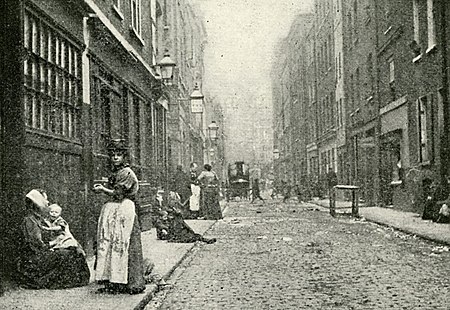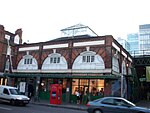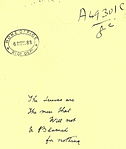Dorset Street (Spitalfields)

Dorset Street was a street in Spitalfields, East London, once situated at the heart of the area's rookery. By repute it was "the worst street in London", and it was the scene of the brutal murder of Mary Jane Kelly by Jack the Ripper on 9 November 1888. The murder was committed at Kelly's lodgings which were situated at No. 13, Miller's Court, entered from a passageway between 26 and 27, Dorset Street. The road was renamed Duval Street in 1904, before having its north side demolished in 1920 during the rebuilding of Old Spitalfields Market, and the buildings on the south side replaced by a car park in the 1960s. The site was built over during redevelopment of the Fruit and Wool Exchange in the 2010s.
Excerpt from the Wikipedia article Dorset Street (Spitalfields) (License: CC BY-SA 3.0, Authors, Images).Dorset Street (Spitalfields)
Spitalfields Market, London Whitechapel
Geographical coordinates (GPS) Address Nearby Places Show on map
Geographical coordinates (GPS)
| Latitude | Longitude |
|---|---|
| N 51.518763 ° | E -0.07504 ° |
Address
Fruit & Wool Exchange
Spitalfields Market
E1 6PW London, Whitechapel
England, United Kingdom
Open on Google Maps











